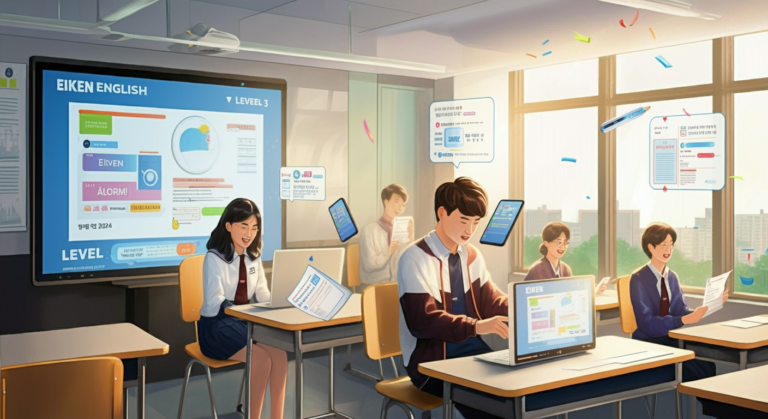Assessment and Evaluation Rubrics
Benefits of Utilizing Comprehensive Evaluation and Assessment Forms
Incorporating a multifaceted approach to evaluation and assessment, encompassing student evaluations, teacher observations, teacher self-reflection, and student self-assessment, offers a wealth of benefits for both EFL teachers and learners:
Enhanced Teaching Effectiveness:
- Teacher Development: Student evaluation forms and teacher self-evaluation rubrics provide invaluable feedback for teachers, allowing them to identify areas of strength and areas where improvement is needed. This feedback loop promotes continuous professional growth and development, leading to more effective teaching practices.
- Reflective Practice: The self-evaluation rubric encourages teachers to critically reflect on their teaching methodologies, lesson design, and classroom management, fostering a culture of continuous improvement.
- Data-Driven Instruction: Teacher observations and formative assessments provide valuable data on student learning and engagement, allowing teachers to make informed decisions about instructional strategies, differentiation, and personalized learning approaches.
Empowered Learners:
- Student Voice and Agency: Student evaluation forms give students a voice in their learning experience, empowering them to share their perspectives and contribute to the creation of a more positive and effective learning environment.
- Self-Awareness and Reflection: Student self-assessment rubrics promote self-reflection and metacognitive awareness, helping students identify their strengths, weaknesses, and areas for improvement. This fosters a sense of ownership and responsibility for their learning journey.
- Goal Setting and Motivation: The combination of self-assessment and teacher feedback enables students to set realistic goals, track their progress, and stay motivated in their language learning endeavors.
Improved Communication and Collaboration:
- Open Communication: These forms foster open and honest communication between teachers and students, creating a more collaborative and supportive learning environment.
- Shared Understanding: The use of consistent criteria and language across all four forms promotes a shared understanding of expectations and goals between teachers and students.
- Targeted Support: The data gathered from these forms allows teachers to identify students who may need additional support or differentiated instruction, ensuring that all learners have the opportunity to succeed.
Positive and Effective Learning Environment:
- Student-Centered Approach: This comprehensive approach to evaluation and assessment places the student at the center of the learning process, fostering a more personalized and engaging learning environment.
- Culture of Continuous Improvement: By regularly utilizing these forms, EFL classrooms cultivate a culture of continuous improvement, where both teachers and students are actively engaged in reflection, feedback, and goal setting.
- Enhanced Learning Outcomes: Ultimately, the use of these forms contributes to improved learning outcomes by promoting effective teaching practices, student engagement, and a supportive learning environment that fosters language acquisition and development.
By embracing a comprehensive approach to evaluation and assessment, EFL programs can empower both teachers and learners, fostering a culture of continuous improvement and creating a more effective and engaging learning experience for all.
Student Evaluation of EFL Teacher
Teacher: __ Date: __ Lesson Topic: __
Instructions:
- Reflect on your experiences in this class: Think about the teacher’s methods, classroom environment, and your overall learning experience.
- Rate each criterion: Use the following scale to rate the teacher’s performance on each criterion:
- Excellent (4): The teacher consistently demonstrates this quality at a high level.
- Good (3): The teacher demonstrates this quality most of the time, but there is room for improvement.
- Needs Improvement (2): The teacher does not consistently demonstrate this quality, and improvement is needed.
- Unsatisfactory (1): The teacher rarely or never demonstrates this quality.
- Provide specific examples: Whenever possible, use the “Notes” column to provide specific examples to support your ratings. This will help the teacher understand your feedback and identify areas for improvement.
- Be honest and respectful: Your feedback should be honest and constructive, focusing on the teaching practices rather than personal characteristics.
- Optional comments: Use the space provided at the end of the form to share any additional feedback or suggestions for the teacher.
| Criteria | Excellent (4) | Good (3) | Needs Improvement (2) | Unsatisfactory (1) | Notes |
|---|---|---|---|---|---|
| Clarity and Organization: | The teacher presented information clearly and logically. Instructions and explanations were easy to understand. | The teacher was mostly clear and organized, but there were some moments of confusion. | The teacher’s explanations were sometimes unclear or disorganized, making it difficult to follow the lesson. | The teacher’s instructions and explanations were confusing and difficult to understand. The lesson lacked organization. | |
| Engagement and Interaction: | The lesson was engaging and interactive. The teacher used a variety of activities and encouraged everyone to participate. | The lesson was mostly engaging, but there were some times when it felt repetitive or boring. | The lesson was not very engaging, and there were few opportunities to interact with the teacher or classmates. | The lesson was boring and unengaging. There was little to no interaction or participation. | |
| Feedback and Assessment: | The teacher provided helpful and specific feedback on my work. I understand how I can improve my English skills. | The teacher gave some feedback, but it wasn’t always clear or helpful. | The teacher rarely provided feedback, or the feedback was not helpful for improving my English skills. | The teacher did not provide any feedback on my work. | |
| Support and Availability: | The teacher was approachable and willing to help. I felt comfortable asking questions and seeking support. | The teacher was generally available for help, but sometimes it was difficult to get assistance. | The teacher was not always available for help, and I did not feel comfortable asking questions. | The teacher was not approachable or available for help. | |
| Cultural Sensitivity: | The teacher demonstrated respect and understanding of different cultures and backgrounds. | The teacher was generally respectful of different cultures but may have made some unintentional insensitive remarks. | The teacher occasionally made comments or used examples that were culturally insensitive. | The teacher frequently made culturally insensitive remarks or did not demonstrate respect for diversity. | |
| Technology Integration: | The teacher used technology effectively to enhance learning and make lessons more engaging. | The teacher used technology sometimes, but it did not always add value to the lesson. | The teacher rarely used technology, or the technology use was not effective. | The teacher did not use any technology in the lesson. | |
| Professionalism: | The teacher was always punctual, prepared, and professional. | The teacher was usually punctual and prepared, but there were occasional exceptions. | The teacher was sometimes late or unprepared for class. | The teacher was frequently late or unprepared and did not demonstrate professionalism. |
Additional Comments: (Optional: Use this space to provide any additional feedback or suggestions for the teacher.)
Thank you for taking the time to provide your feedback! Your input is valuable and will help me improve my teaching.
Teacher Observation Form: Student Engagement and Participation
Student: __ Date: __ Lesson Topic: __
Instructions: Please observe the student’s behavior during class and rate their performance on each criterion using the following scale:
- Excellent (4): Consistently demonstrates the desired behavior.
- Good (3): Generally demonstrates the desired behavior but may need occasional reminders or support.
- Needs Improvement (2): Demonstrates the desired behavior inconsistently or requires frequent reminders.
- Unsatisfactory (1): Rarely or never demonstrates the desired behavior.
| Criteria | Excellent (4) | Good (3) | Needs Improvement (2) | Unsatisfactory (1) | Notes |
|---|---|---|---|---|---|
| Active Listening: | Maintains eye contact with the presenter, nods, and shows nonverbal signs of understanding. | Listens attentively but may occasionally get distracted. | Shows signs of disengagement, such as looking away or fidgeting. | Not paying attention to the presenter. | |
| Participation: | Actively participates in discussions, asks relevant questions, and shares ideas. | Participates when called upon and answers questions accurately. | Participates minimally or hesitantly. | Does not participate in discussions or activities. | |
| Respectful Behavior: | Shows respect for the presenter and classmates by listening attentively, avoiding interruptions, and using appropriate language. | Generally respectful but may occasionally exhibit off-task behavior. | Engages in side conversations or disruptive behavior. | Shows disrespect towards the presenter or classmates. | |
| Preparation: | Comes to class prepared with notes or materials relevant to the presentation. | May have some notes or materials but not fully prepared. | Lacks preparation or necessary materials. | Comes to class unprepared. |
Overall Observations: (Use this space to provide additional comments or observations about the student’s engagement and participation.)
Recommendations: (Suggest strategies or interventions to help the student improve their engagement and participation in class.)
Teacher Reflection:
- Based on my observations of this student, what aspects of my teaching practice were effective in promoting engagement and participation?
- What could I have done differently to better support this student’s engagement and learning?
- What adjustments can I make to my lesson planning or teaching strategies to create a more inclusive and engaging learning environment for all students?
Self-Evaluation Rubric for EFL Teachers
Teacher: __ Date: __ Lesson Topic: __
Instructions: Reflect on your teaching practices during the lesson and rate yourself on each criterion using the following scale:
- Excellent (4): I consistently demonstrated this quality at a high level throughout the lesson.
- Good (3): I demonstrated this quality most of the time, but there is room for improvement.
- Needs Improvement (2): I did not consistently demonstrate this quality, and I need to focus on improvement.
- Unsatisfactory (1): I rarely or never demonstrated this quality during the lesson.
Use the “Notes” column to provide specific examples or evidence to support your ratings and to reflect on areas for improvement.
| Criteria | Excellent (4) | Good (3) | Needs Improvement (2) | Unsatisfactory (1) | Notes |
|---|---|---|---|---|---|
| Clarity and Organization: | I presented information clearly and logically, using appropriate language and visuals. Instructions and explanations were easy for students to understand. | My instructions were generally clear, but there were a few instances where students seemed confused and required additional explanation or clarification. I need to ensure that I am checking for understanding more frequently and providing multiple examples. | My explanations were sometimes unclear or disorganized. The organization of the lesson could have been improved. The transitions between activities were not always smooth, and some students seemed unsure of what was expected of them. I need to plan more carefully and consider the flow of activities to ensure a more cohesive learning experience. | My instructions and explanations were confusing and lacked organization. | |
| Engagement and Interaction: | The lesson was engaging and interactive, with a variety of activities that catered to different learning styles and encouraged active participation. | The lesson included a variety of activities, but some students seemed disengaged during certain tasks, particularly those that involved individual work or reading. I need to explore more interactive and collaborative activities to cater to different learning styles and maintain engagement throughout the lesson. | The lesson lacked sufficient opportunities for student interaction and discussion. Students were mostly passive recipients of information, and there was limited student-to-student communication. I need to incorporate more pair/group work, discussions, and activities that encourage active participation. | The lesson was not engaging, and students were not actively involved. | |
| Feedback and Assessment: | I provided timely, specific, and constructive feedback that helped students understand their strengths and weaknesses. I used a variety of assessment methods to track student progress effectively. | I provided feedback on student work, but it may not have been as timely or as specific as it could have been. I focused on correcting errors but could have done more to provide positive reinforcement and highlight areas of strength. | The feedback I provided was often general and did not offer clear guidance for improvement. I need to develop a more systematic approach to providing feedback that is specific, actionable, and timely. | I did not provide feedback or assess student learning effectively. | |
| Support and Availability: | I was approachable and available to help students both inside and outside of class. I offered additional support and resources to students who were struggling. | I was generally available to help students, but there may have been times when I was not as accessible as I could have been. | I was not always available to help students, and some students may have felt hesitant to ask for assistance. | I was not approachable or available to support students. | |
| Cultural Sensitivity: | I demonstrated sensitivity and respect for different cultures and backgrounds throughout the lesson. I used inclusive language and examples that were relevant to students’ diverse experiences. | I am aware of the importance of cultural sensitivity, but I may have unintentionally used examples or made comments that did not reflect the diversity of my students’ backgrounds and experiences. I need to be more mindful of my language and choice of materials to ensure inclusivity in the classroom. | There were instances where my teaching practices or materials were not culturally sensitive, and I may have perpetuated stereotypes or biases. I need to educate myself further on cultural sensitivity and implement strategies to create a more inclusive classroom environment. | I did not demonstrate cultural sensitivity and may have made offensive or inappropriate remarks. | |
| Technology Integration: | I effectively integrated technology into the lesson to enhance learning and engagement. Technology use was purposeful and aligned with the learning objectives. | I used technology in the lesson, but it may not have been fully integrated or as effective as it could have been. | I rarely used technology, or the technology use was not well-planned or relevant to the lesson. | I did not use technology in the lesson. | |
| Professionalism: | I demonstrated professionalism in my demeanor, preparation, and time management. | I was generally professional, but there may have been areas where I could improve my punctuality or preparedness. | I was occasionally late or unprepared for class, and my professionalism could be improved. | I was frequently late or unprepared, and my behavior did not reflect professional standards. |
Areas for Improvement:
(Reflect on the areas where you scored yourself lower and identify specific steps you can take to improve your teaching practices.)
Additional Notes: (Include any other reflections or observations about the lesson.)
By regularly engaging in self-evaluation, EFL teachers can reflect on their teaching practices, identify areas for growth, and continuously strive to improve the learning experience for their students.
Self-Assessment Rubric for Student Engagement and Participation
Student Name: _____________ Date: _____________ Lesson Topic: __
By using this rubric, students can reflect on their own behavior and identify areas where they can improve their engagement and participation in class.
Instructions: Reflect on your behavior and level of engagement during the lesson. Rate yourself on each criterion using the following scale:
- Excellent (4): I consistently demonstrated this behavior throughout the lesson.
- Good (3): I demonstrated this behavior most of the time, but there is room for improvement.
- Needs Improvement (2): I did not consistently demonstrate this behavior, and I need to focus on improvement.
- Unsatisfactory (1): I rarely or never demonstrated this behavior during the lesson.
Use the “Notes” column to provide specific examples or evidence to support your ratings and to reflect on areas for improvement.
| Criteria | Excellent (4) | Good (3) | Needs Improvement (2) | Unsatisfactory (1) | Notes |
|---|---|---|---|---|---|
| Active Listening: | I actively listened to the teacher and my classmates. I maintained eye contact, nodded to show understanding, and avoided distractions. | I maintained eye contact with the speaker most of the time, but I may have looked away or fidgeted occasionally, especially during longer explanations. | I struggled to maintain focus and often found myself distracted by other thoughts or activities in the classroom. I need to practice active listening strategies, such as taking notes or asking clarifying questions. | I was not actively listening and was easily distracted. | |
| Participation: | I actively participated in class discussions and activities. I asked questions, shared my ideas, and contributed to group work. | I participated when called upon and answered questions accurately. | I participated minimally in class discussions and activities. I may have been hesitant to share my ideas. | I did not participate in class discussions or activities. | |
| Respectful Behavior: | I demonstrated respect for the teacher and my classmates by listening attentively, avoiding interruptions, and using appropriate language. | I was respectful towards the teacher and my classmates most of the time, but there were instances where I may have engaged in side conversations or off-task behavior, especially when I finished my work early or found the activity less engaging. | There were times when I was disruptive or disrespectful, such as interrupting others, making inappropriate jokes, or using my phone during the lesson. I need to be more mindful of my behavior and its impact on others. | I was frequently disruptive or disrespectful, and my behavior negatively impacted the learning environment. | |
| Preparation: | I came to class prepared with all necessary materials and completed any assigned homework or readings. | I was mostly prepared for class, but I may have forgotten some materials or not completed all assignments. | I was not fully prepared for class and lacked some necessary materials or assignments. | I came to class unprepared and did not have the necessary materials or assignments. |
Reflection on Engagement and Learning:
- What strategies helped me stay engaged and actively participate in today’s lesson? (Identify successful behaviors and strategies you can continue using.)
- What challenges did I face during the lesson, and how could I address them in the future? (Reflect on both engagement and learning challenges, to focus on problem-solving skills.)
- What specific actions can I take outside of class to further improve my English skills based on what I learned today? (Connects learning gains with actionable steps for continued progress.)
Feedback on Evaluation/Assessment Forms
Overall: The four evaluation/assessment forms you’ve created are well-structured, comprehensive, and provide clear criteria for evaluation and self-assessment. The inclusion of instructions, rating scales, and space for notes and reflections enhances their effectiveness.
Consistency: There is good consistency in terms of format and structure across all four forms, making them easy to use and understand. The rating scales and instructions are similar, ensuring clarity and ease of comparison.
Possible Improvements:
- Additional Criteria: Depending on the context and learning objectives, you may consider adding criteria related to specific skills or areas of focus, such as pronunciation, vocabulary development, or intercultural competence. #ToDo
- Differentiation: You could adapt the rubrics to different proficiency levels or learning styles to provide more personalized feedback and evaluation. #ToDo
Additional Suggestions:
- Training and Calibration: Provide training to both teachers and students on how to effectively use the evaluation/assessment forms to ensure consistency and accuracy in their application.
- Feedback Loop: Establish a clear process for sharing and discussing feedback from the evaluations to promote open communication and collaboration between teachers and students. #ToDo
- Actionable Goals: Encourage teachers and students to set specific, measurable, achievable, relevant, and time-bound (SMART) goals based on the feedback received. #ToDo
- Continuous Improvement: Use the evaluation data to inform ongoing professional development for teachers and to identify areas where the curriculum or teaching methodologies can be improved. #ToDo
By implementing these suggestions and maintaining a focus on continuous improvement, these evaluation/assessment forms can become valuable tools for enhancing teaching effectiveness, promoting student engagement, and fostering a positive and productive learning environment in your EFL classroom.
Enhancing Rubric Specificity for More Effective Feedback #ToDo
Benefits of Specific Descriptors:
- Clearer Feedback: Specific descriptors provide a more accurate picture of performance and help individuals understand their strengths and weaknesses more clearly.
- Actionable Steps: By pinpointing specific areas for improvement, individuals can identify concrete steps they can take to enhance their skills or behavior.
- Goal Setting: Specific feedback makes it easier to set realistic and achievable goals for improvement.
- Reduced Subjectivity: Clear descriptors help minimize subjectivity in the evaluation process, ensuring greater fairness and consistency.
By taking the time to add more specific descriptors to your rubrics, you can enhance the quality of feedback, making it more meaningful, actionable, and ultimately more effective in guiding improvement and promoting growth for both teachers and students.






